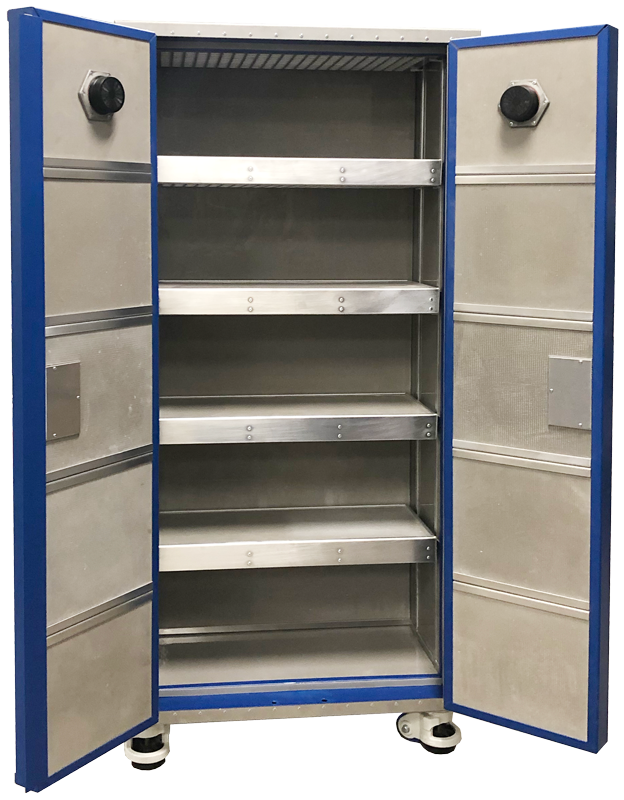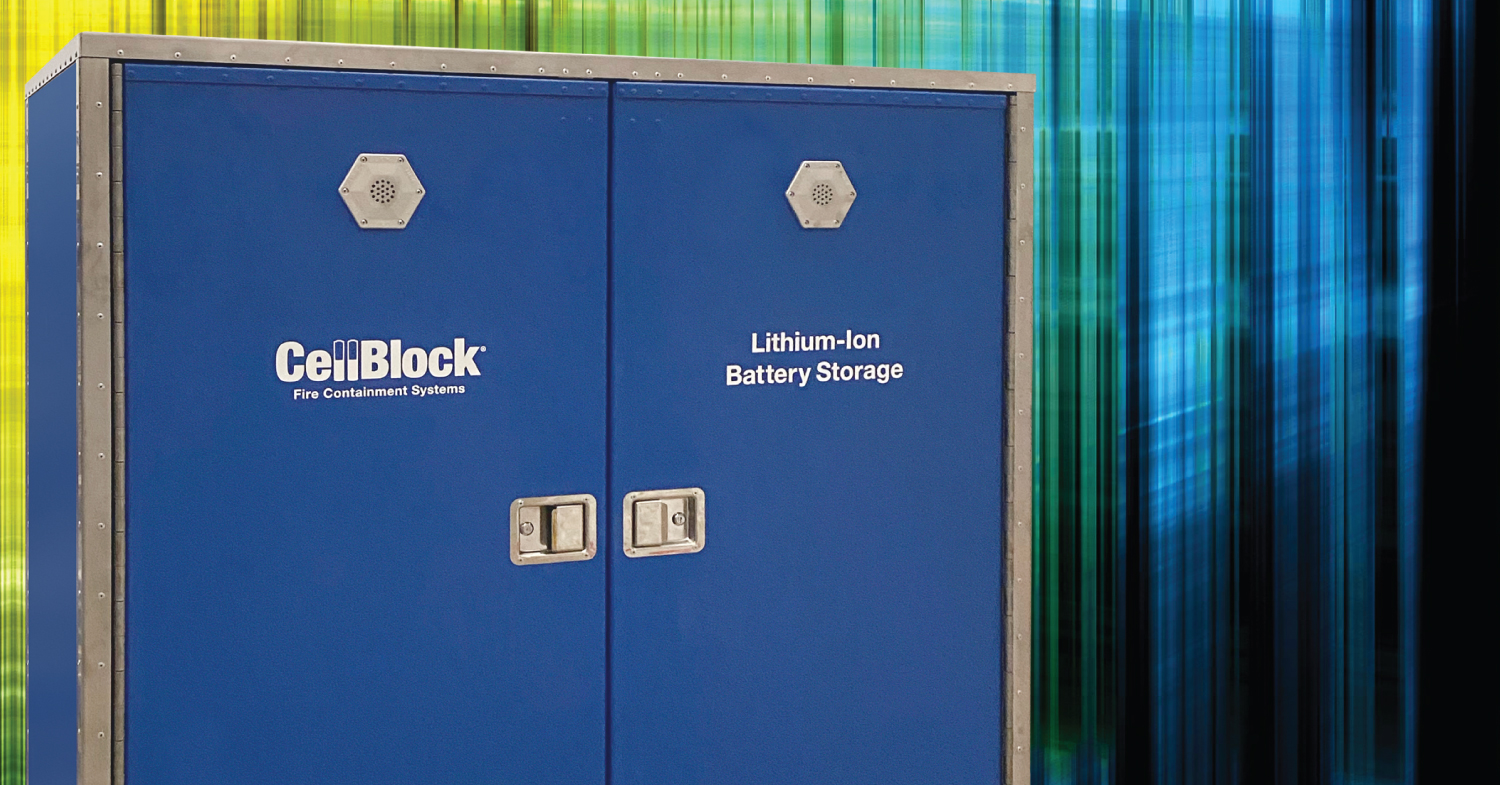
I’ve recently discovered that many people store batteries in their refrigerator, presumably because some well intentioned science teacher taught them colder temperatures slow down the rate of energy discharge. While the science behind the idea has merit, most battery manufacturers recommend against storing your batteries in the fridge for numerous reasons related to safety.
So if you shouldn’t keep your batteries next to the mayonnaise, where should they be stored? Below, CellBlock FCS has prepared some general tips for lithium battery storage safety.
Keep battery terminals from touching
The single most important step when storing lithium batteries is to ensure the battery terminals are not in contact with any metals or other battery terminals. Your batteries (and devices containing them) should be held in a stable cabinet, locker, or shelf that will not be bumped or jostled by machinery or personnel. This will prevent your batteries from becoming displaced, thereby keeping the terminals untouched. Consider using battery terminal covers where applicable for added protection. Or just keep them in the original packaging, if that’s practical for you.
Lastly, to prevent them from touching, keep your batteries well separated, like an angry father would separate rambunctious children in the backseat of a station wagon during a road trip. Sometimes, a lack of space might force you to stack them (the batteries, not the hypothetical children), but if stacking can be avoided, great. If not, place them in such a way that they will not be disturbed by movement, and do not place any other objects on top of them.
Separate batteries by age and type
Sorry folks. In the interest of safety, you might have to do some organization. We promise it will be okay.
Separating batteries by type just makes sense because a box or shelf riddled with randomly scattered cells of all sizes and shapes sounds like an unruly breed of chaos that I personally don’t have the emotional capacity to process. Not to mention, segregating your batteries by type simplifies the process of preventing the ends from touching.
Separating your batteries by their age is also an important safety measure, albeit much less obvious. Generally speaking, the weakest battery is the limiting factor in your device’s performance. Your remote might fail to generate a signal, or your emergency flashlight might flicker with a lower brightness if at least one battery is weak. What’s worse is that mixing new and old batteries can be dangerous.
The chemical reaction that occurs inside a battery outputs a constant voltage. The speed of this reaction is dependent on the internal resistance of the battery. As a battery is used, the resistance rises. This resistance essentially causes the battery to heat up as the fresh battery forces energy through the older battery, which may cause the older battery to overheat or even leak. Plus, the fresh battery loses its energy at a much faster rate, which is far from efficient.
If you keep track of how long you’ve had your batteries, you’re more likely to safely get a full use out of them. Write labels on the packaging of your batteries, or simply leave the receipts with your batteries so you can remember the date of purchase.
Store batteries in a mild, dry climate
The word “climate” here makes it sound like batteries have a preferred natural habitat or ecosystem, but you know what we mean. The environment in which your batteries reside should be a mild one. Batteries should be stored away from sunlight, heat, and humidity. Keep the storage area ventilated and dry, and maintain a relatively steady temperature. The ideal battery storage temperature is around 59℉, but most room temperatures will suffice. Unless your room is outside of the –40°F to 122°F range for some reason, in which case, we must assume you live in either an igloo or a volcano, and we cannot realistically recommend battery storage anywhere within your home.
For maximum safety, use a battery storage cabinet
If your business requires a sizable cache of batteries to power equipment and devices, or if storing large tool batteries is necessary for your daily operations, you might want to consider a dedicated battery storage cabinet to optimize worker safety. This might sound like a crazy coincidence, but CellBlock just so happens to manufacture those.
CellBlock battery cabinets are lined with our proprietary fire liner: CellBlockEX. This dry, fire extinguishing media provides both insulation and fire-suppression to keep your assets and personnel safe from hazardous lithium-ion battery fires. They can even come outfitted with access ports to charge your devices while reducing the risk of thermal events.
For a customized battery storage solution that’s right for your business, contact CellBlock FCS today.

